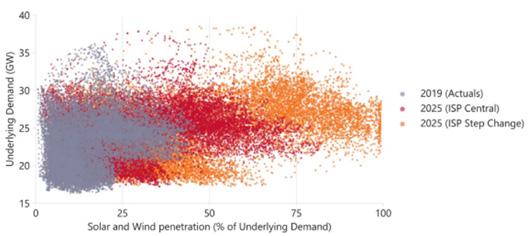DIGITAL INFRASTRUCTURE: AN ESSENTIAL BACKBONE John Pickhaver | Head of Infrastructure and Energy and Co-Head of Macquarie Capital, Australia and New Zealand Joanne Spillane | Global Head of Private Capital Markets, Macquarie Capital
Digitisation has been one of the most important trends shaping the global economy over the past few years. Now, in the midst of the COVID-19 pandemic, the pace of change is accelerating. As a result, so too has investor focus on increasing exposure to digital infrastructure in their portfolios alongside traditional infrastructure assets.
THE PACE OF CHANGE SHIFTS INTO TOP GEAR Internet content delivered to and from mobile-enabled devices accounts for half of all global website traffic. In the second quarter of 2020, mobile devices generated 51.5 percent of global website traffic and this figure has hovered around the 50 per cent mark every quarter since the first quarter of 2017.1 This means its pace of growth is also a good measure of how quickly digitisation is occurring. Between 2017 and 2018, global mobile data traffic grew from 11.5 exabytes to 19.0 exabytes per month.2 Pre COVID-19 this was forecast to rise to 77.5 exabytes per month by 2022. It is now estimated that mobile data usage in 2025 will be almost six times higher than the levels seen in 2018,3 driven by smartphone adoption and affordable high-speed network services. We are travelling less frequently (if at all), spending more time at home, avoiding physical contact and re-thinking the way we consume goods and services.
PA R TN E R S H IP S 2 0 2 0
COVID-19 hasn’t so much changed the way we live, as upended it. In the space of six months, the pandemic has brought forward the transition from physical shopping to e-commerce by an estimated five years, IBM research shows. The workplace has been similarly transformed. In 2019, only seven per cent of civilian workers in the US had access to flexible working. Global Workplace Analytics expects that in two years as much as 30 per cent of the US’s workforce will continue to work from home multiple days a week. Meanwhile, as people stayed home for entertainment instead of going out, broadband usage across the United States and European Union rose 47 per cent in Q1 2020 compared to the same time last year. In the face of unprecedented demand through lockdown, Netflix and Google’s European arms were reportedly both forced to reduce transmission quality just to keep providing their service to all subscribers. Corporate technology strategies are also changing as the need for scalable, secure data storage has driven the shift from storing data on premises to outsourced cloud providers. The Uptime Institute forecasts that half of all data centre workloads will be run by hyperscale or edge data centres via SaaS providers and the cloud by 2021.4
5










